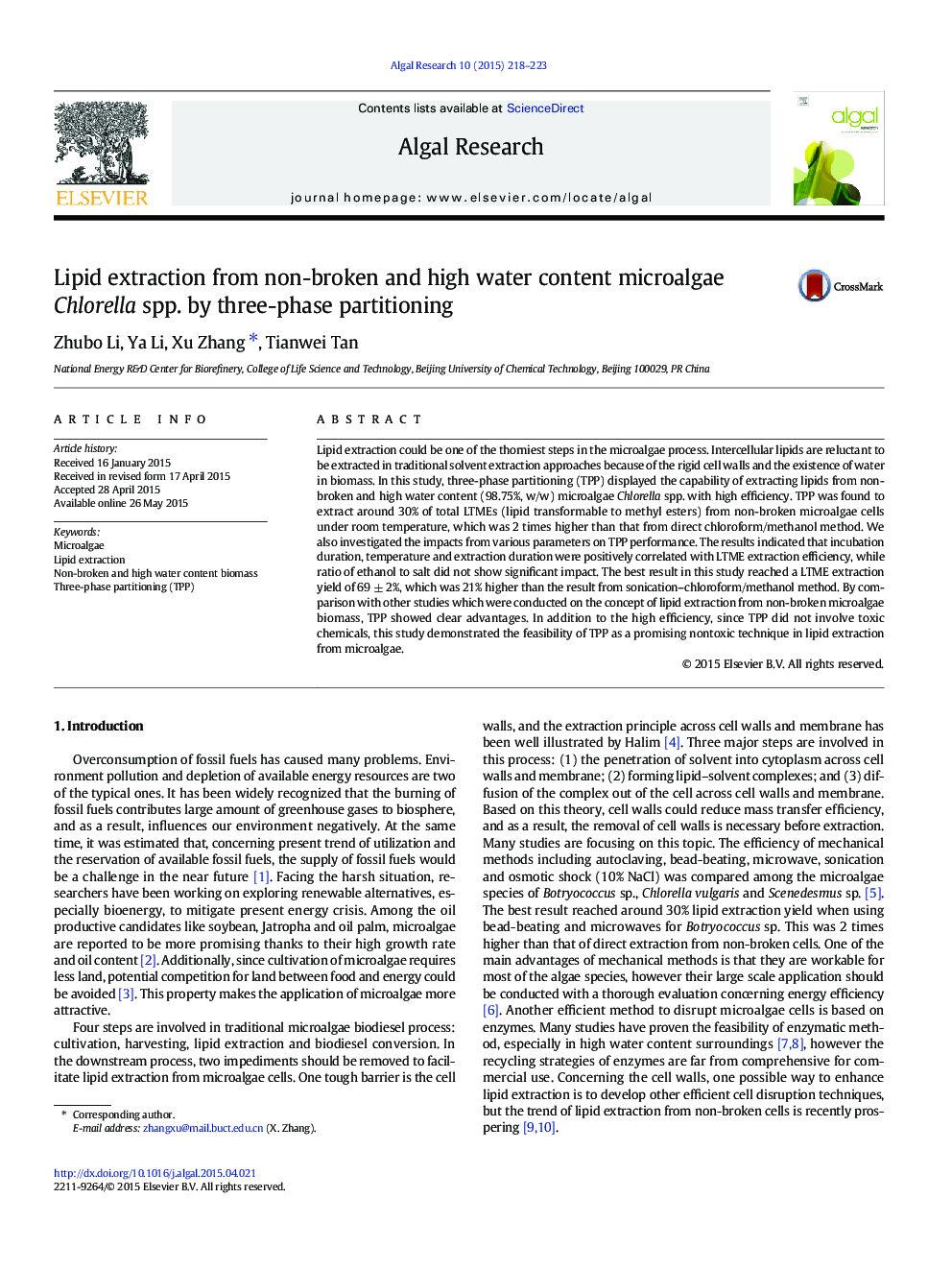| Article ID | Journal | Published Year | Pages | File Type |
|---|---|---|---|---|
| 1742030 | Algal Research | 2015 | 6 Pages |
•TPP was used in lipid extraction from microalgae for the first time.•TPP could extract lipid from non-broken and high water content microalgae biomass.•Four parameters were investigated to improve TPP performance.
Lipid extraction could be one of the thorniest steps in the microalgae process. Intercellular lipids are reluctant to be extracted in traditional solvent extraction approaches because of the rigid cell walls and the existence of water in biomass. In this study, three-phase partitioning (TPP) displayed the capability of extracting lipids from non-broken and high water content (98.75%, w/w) microalgae Chlorella spp. with high efficiency. TPP was found to extract around 30% of total LTMEs (lipid transformable to methyl esters) from non-broken microalgae cells under room temperature, which was 2 times higher than that from direct chloroform/methanol method. We also investigated the impacts from various parameters on TPP performance. The results indicated that incubation duration, temperature and extraction duration were positively correlated with LTME extraction efficiency, while ratio of ethanol to salt did not show significant impact. The best result in this study reached a LTME extraction yield of 69 ± 2%, which was 21% higher than the result from sonication–chloroform/methanol method. By comparison with other studies which were conducted on the concept of lipid extraction from non-broken microalgae biomass, TPP showed clear advantages. In addition to the high efficiency, since TPP did not involve toxic chemicals, this study demonstrated the feasibility of TPP as a promising nontoxic technique in lipid extraction from microalgae.
